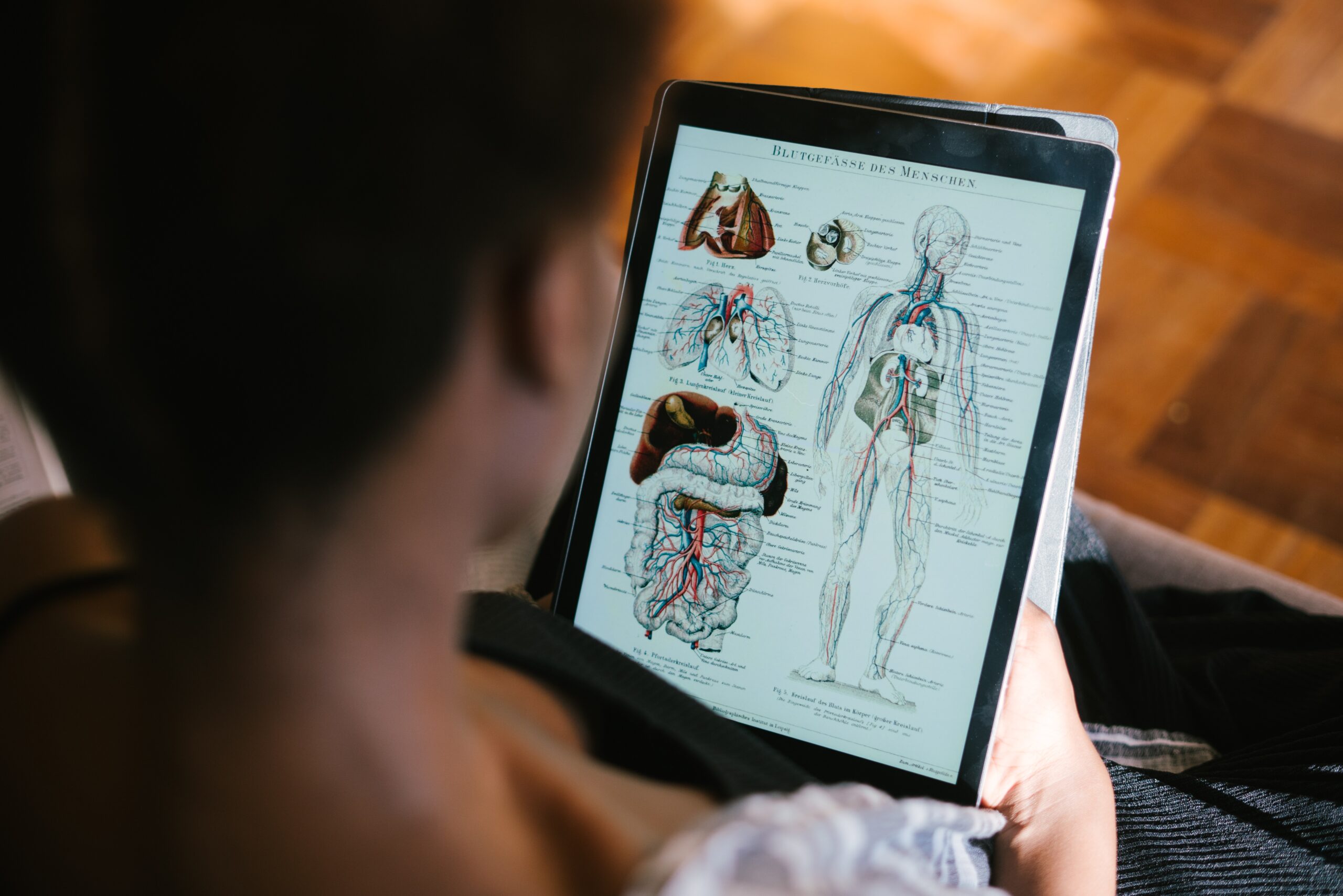Every moment, the three doshas Vata, Pitta, and Kapha are influencing the human body. For instance, Vata helps in the transportation of nutrients from food, Pitta is responsible for metabolizing the nutrients so they can be assimilated and Kapha is responsible for using the assimilated nutrients for the construction of the cells. Each of the three doshas is most concentrated in a specific part of the body which is called the “seat of the dosha”. The seat of Vata is the large intestine, the seat of Pitta is the small intestine and the seat of Kapha dosha is the lungs. However, all three doshas are also concentrated in other specific parts of the body, for example, Vata is concentrated in the brain, lungs, stomach, circulation, and nervous system. While Pitta’s greatest concentration is in the small intestine, it also resides in the liver, heart, eyes, and skin. And Kapha’s primary seat is the lungs but it is also located in the stomach, mouth, head, and joints.
Doshic imbalances occur in a certain location in the body which can be identified based on the characteristics of the imbalance conditions. It is a certain form of a dosha that leads to an imbalance in a certain part of the body, which we call a Subdosha. There are five Subdoshas for each Dosha Vata, Pitta Kapha.
The five Forms or Subdoshas of Vata, Prana Vata, Udana Vata, Samana Vata, Vyana Vata, and Apana Vata are responsible for stimulating motion in nerves, muscles, and blood vessels of particular parts of the body.
- Prana Vata: Residing in the brain, and circulating through the heart mouth, and throat, Prana Vata is the vital life-forming energy that is responsible for many higher and lower functions. The higher functions include command of senses, intellect, thinking, memory and feeling, and emotions. While Prana Vata’s lower-level functions enable us to inhale and swallow, sneeze, belch and breathe. Imbalance in Prana Vata causes worry, anxiety, insomnia, and diseases and ailments such as asthma, tuberculosis, memory loss, and tension headaches.
- Udana Vata: Udana Vata is located in the chest and throat and circulates through the nasal cavity, diaphragm, and navel. The higher functions of Upana Vata are memory retention, reproduction, and mind stimulation. On the other hand, the lower level functions of Udana Vata are an upward movement of air which are responsible for sound and speech production and exhalation. Imbalance in Udana Vata can lead to dry eyes, depressive states, sore throat, fatigue, speech issues, and diseases like cancer and tonsillitis.
- Samana Vata: Located primarily in the belly and the small intestine, Samana Vata also circulates through the sweat glands, liver, and pancreas. The higher functions of Samana Vata are regulating metabolism, food retention, aiding digestion, assimilation, and segregation of ingested food as digestible and indigestible. The secondary lower-level function of Samana Vata is maintaining digestive fire and sweat, feces, and urine discharge. The imbalance in Samana Vata can cause indigestion, poor nutrition, gas, and illness such as diarrhea.
- Vyana Vata: Vyana Vata’s seat is the heart but it circulates throughout the body, circulating nutrients, blood, and oxygen to all tissues and organs. The main higher function of Vyana Vata is to transport oxygenated blood to all parts of the body and concurrently receive & purifying de-oxygenated impure blood from different parts of the body. Additionally, Vyana Vata distributes essential nutrients from the digestion of food in the stomach and the intestines through the blood vessels. The lower-level functions of Vyana Vata are to assist the movement of joints of the limbs and the vertebra, hence responsible for activities such as walking, running, blinking, stretching, and exercising. The imbalance in Vyana Vat can cause autoimmune disorders such as arthritis, heart irregularity and other imbalances such as cracking of joints, nervousness, and poor blood circulation.
- Apana Vata: Located in the lower parts of the body including the large intestine and lower abdomen and pelvis and circulates through the penis, urinary bladder, anus, rectum, colon, testes, navel, and groin. The higher functions of Apana Vata is to help conception by regulating ejaculation of semen during sex, maintaining a regular menstrual cycle, and evacuation of bowels and elimination of urine. Any imbalance in Apana Vata can lead to issues such as constipation, diarrhea, diabetes, sexual dysfunction, back pain, and menstrual disorders.
The five Forms or Subdoshas of Pitta, Alochakra Pitta, Sadaka Pitta, Pachaka Pitta, Ranjaka Pitta, and Bhrajaka Pitta are responsible for digestion, assimilation, metabolism, endocrine function, transformation and heat production, and comprehension.
- Alochaka Pitta: Alochaka Pitta nestles in one’s eyesight and is responsible for visual sense perception of objects and helps the intellect cognize and recognize information that the eyes send through. The other function of Alochaka Pitta is to help us remember and store information that we see through memory, introspection, and concentration. The imbalance in Alochaka Pitta can lead to eye diseases, visual problems, irritated eyes, and anger.
- Sadhaka Pitta: Sadhaka Pitta is said to be seated in the heart but it seems to have a connection is to higher centers of the brain and even regarded as the seat of consciousness. The pitta subtype is responsible for several functions including helping us to aspire and achieve and one can say that Sadhaka Pitta led to the evolution and growth of humankind. Sadhaka Pitta infuses passion, zeal, intellectual thinking, and the power to discriminate. The imbalance in Sadhaka Pitta can lead to heart attack, indecision, and emotional disturbance.
- Pachaka Pitta: Pachaka means “digestion” and that makes the small intestine in between the colon and the stomach the seat of Pachaka Pitta dosha subtype. As the name suggests, Pachaka Pitta helps in the digestion, absorption, and assimilation of food that we swallow, chew, drink and lick. This requires sub-representatives of Pachaka Pitta, including gut fire (jathara agni), tissue fire (dhatu agni) and elemental fire (bhuta agni) to work in synergy. The imbalance in Pachaka Pitta can lead to ulcers, heartburn, indigestion, addiction, and cravings
- Ranjaka Pitta: Ranjaka Pitta transmits color to the rasa dhatu and liver is said to be the seat of this Pitta sub-type in form of bile and in spleen as the production of red blood cells and it is circulated through the heart. The key function of Ranjaka Pitta is to impart color to the rasa dhatu as it passed through the colon. However, some authors also believe that Ranjaka Pitta is responsible for providing color to the eyes, skin, hair, urine, and stool. The imbalance in Ranjaka Pitta can cause anger, hostility, skin inflammation, liver disease, blood disorders, and low blood pressure.
- Bhrajaka Pitta: Residing in the skin, Bhrajaka Pitta imparts color to the skin and is responsible for healthy glowing skin tissues. Hence, Bhrajaka Pitta’s main function is to help in developing glowing healthy skin, regulating skin temperature, and providing color to the skin. It also helps us to empathize and be understanding and compassionate to others. The imbalance in this Pitts dosha sub-type can cause acne, pimples, boils, inflammation, edema, rashes, and even skin cancer.
The five Forms or Subdoshas of Kapha, Tarapaka Kapha, Bodhaka Kapha, Avalambaka Kapha, Kledaka Kapha, and Slesaka Kapha are responsible for maintaining bodily tissues and structure, strength & stability, and coolness in the body and converting it to blood.
- Tarapaka Kapha: Residing in the head, Tarapaka Kapha is responsible for Tarpana, the feeling of completeness and freshness. Tarapaka Kapha Provides nourishment to our sense organs and manages our sense perceptions. The balance in Tarapaka Kapaha results in the right perception through all sense organs as information from the sense organs is rightfully transmitted to the brain and the brain is able to make a proper understanding of the information being received from the sense organs to the brain. On a mental level, Tarapaka Kapha functions to provide forgiveness, tolerance, and immunity and resist Vata and Pitta’s aggravating tendencies such as anger, anxiety, and stress. On the other hand, imbalance in this sub-dosha can lead to headaches, irritability, loss of smell, sensory deprivation
- Bodhaka Kapha: Located in the tongue and throat, Bodhaka Kapha dosha is responsible for the perception of taste. The literal meaning of Bodhaka is “one which helps to inform or enlighten” and hence Bodhaka Kapha helps in the recognition of taste perception and the six different tastes in food. When we take a morsel of food in our mouth, the tongue where the Bodhaka Kapha resides activates and helps us recognize and discriminate the taste, flavor, and texture of the food. This sub-dosha is not only produced when eating food but also at the sight of food. The imbalance in Bodhaka Kapha can lead to loss of taste, congestion, obesity, diabetes, and food sensitivity due to the inability of the body to secrete the right enzymes, saliva, and digestive fluids to help in the ingestion of food.
- Avalambaka Kapha: Nested in the scapular regions around the lungs and heart, Avalambaka Kapha is a sub-dosha type of Kapha dosha that supports the organs in the chest area. Essentially, Avalambaka Kapha dosha helps in the smooth function of the heart and lungs. What it means is that this sub-dosha helps in protecting the chest cavity and provides lubrication so that the lungs can expand and contract for proper oxygenation and similarly the heart can provide oxygen to all organs and tissues through proper oxygenation of the blood. Additionally, due to its prime location, it also participates in the regulation and management of all Kapha sub-doshas. An imbalance in Avalambaka Kapha can lead to chest congestion, asthma, lethargy, stiffness, and even back pain.
- Kledaka Kapha: Kledaka Kapha is located in the stomach and it helps in the digestion of food. In the process of food digestion, after the food is chewed and swallowed, the food enters the stomach where its transformation takes place. Here the food is converted into chyme which inherently has a sweet taste and a foamy texture, and this essentially is Kledaka Kapha. Hence, the key function of Kledaka Kapha dosha is to help moisten the food and break it down into smaller molecules so that it can be easily digested and the nutrition can be absorbed and assimilated by the body. Additionally, Kledaka Kapha provides protection to the mucus membrane of the stomach from the strong acid released during Pitta digestion in the stomach. An imbalance in Kledaka Kapha can lead to slow digestion, fullness, and excess mucus in the stomach.
- Slesaka Kapha: Slesaka translates to that which connects two things together. Located in the joints of our bones, Slesaka Kapha is responsible for keeping the joints glued together. Additionally, Slesaka Kapha dosha helps in the lubrication of the joints which provides mobility so that we can perform our daily tasks and actions painlessly. Thus, any movement like walking, climbing, running, pushing, and bending is all done with the help of Slesaka Kapha. The sub-dosha also acts as a shock absorber to the joints in the limbs and spines and thus preventing wear and tear. An imbalance in Slesaka Kapha can lead to weak joints, swelling, stiffness, and slow painful movements


